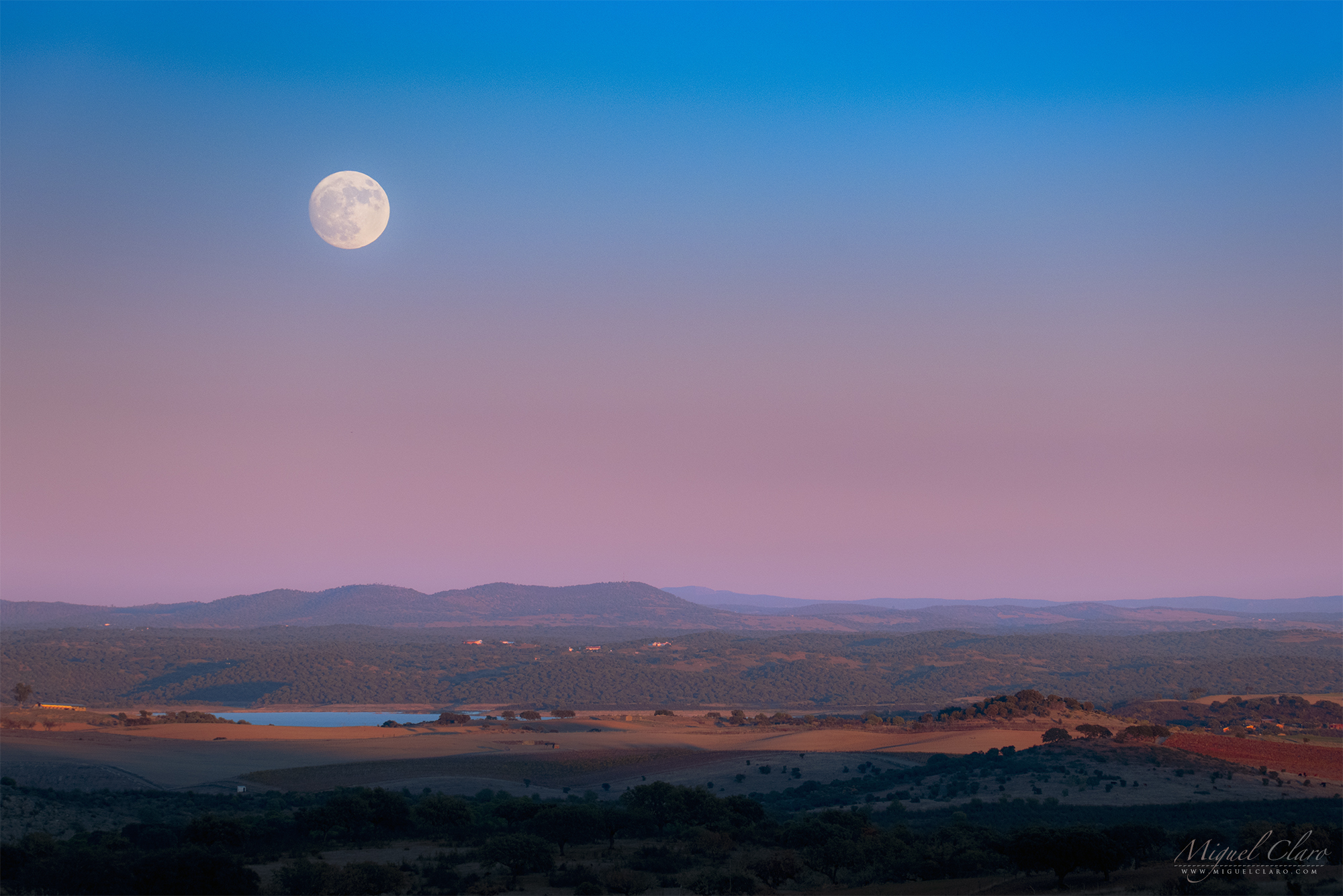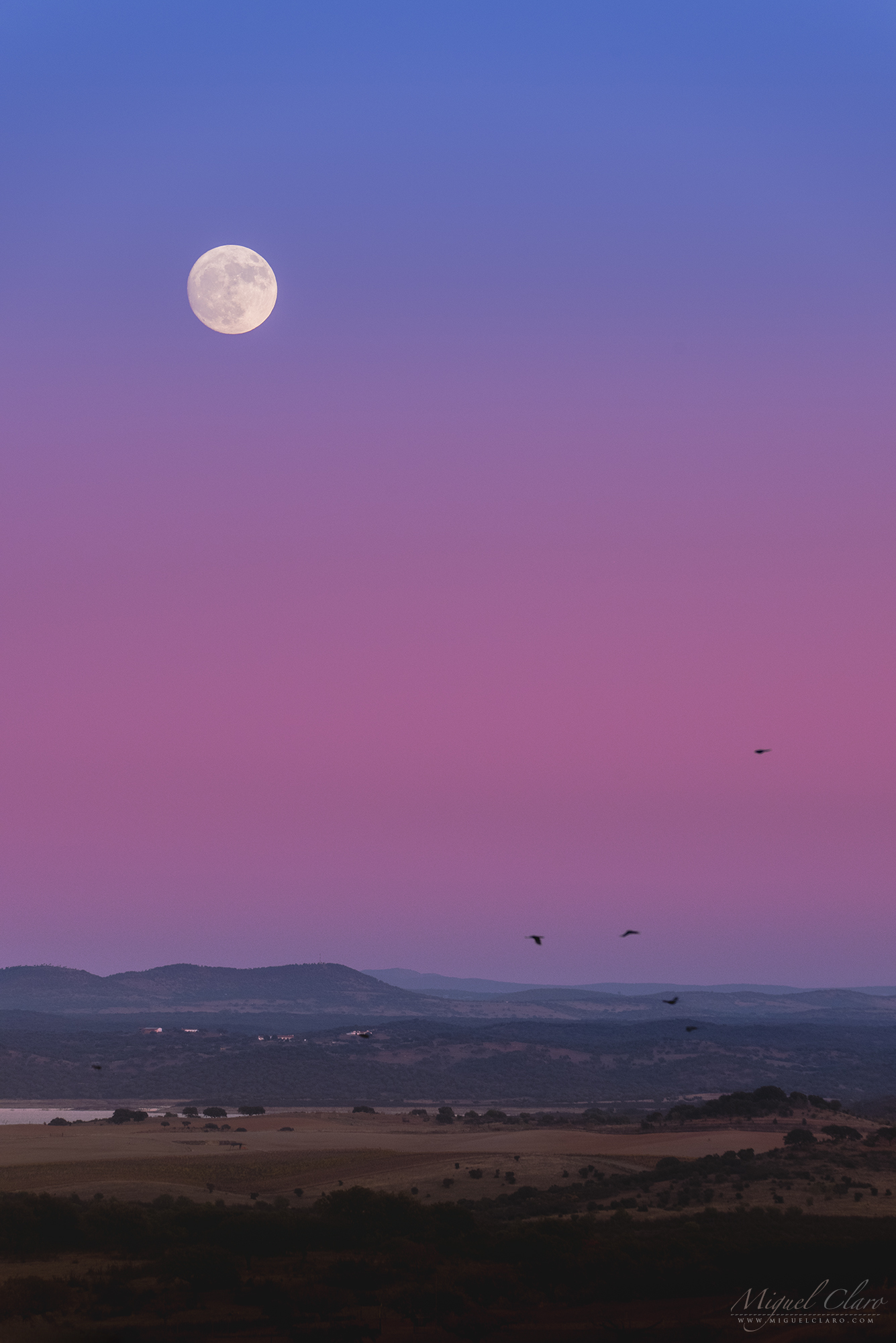Supermoon and Pink Sky: Full Moon Rises Against 'Belt of Venus'

Miguel Claro is a Lisbon, Portugal-based professional photographer, author and science communicator who creates spectacular images of the night sky. As a European Southern Observatory photo ambassador, a member of the international astrophotography project The World At Night and the official astrophotographer of the Dark Sky Alqueva Reserve, he specializes in astronomical "skyscapes" that connect Earth and the night sky. Join him here as he takes us through his photograph "Super Full Cold Moon Rising Above Lake Alqueva in Monsaraz."
A nearly full "supermoon" rises above a pink band in the sky known as the "Belt of Venus" in this photo captured above Lake Alqueva in the Portuguese village of Monsaraz.

Also known as the anti-twilight arch, this phenomenon is visible shortly after sunset above the eastern horizon. It is caused by reddened sunlight scattering off of particles in the upper atmosphere, a process known as Rayleigh scattering. The reddened rays combine with blue and violet light to give the rosy pink band.
This image was captured on Dec. 2, 2017, one day before the "Full Cold Supermoon" reached its peak, with its face fully illuminated by sunlight. Though it appears full in the photo, the moon's face was only 98 percent illuminated at the time. This was the first (and last) "supermoon" of 2017. [Supermoon 2017! Amazing Full Cold Moon Photos by Stargazers]
Supermoons happen when the moon becomes full around the same time that it reaches perigee, or a point in its orbit at which it is closest to Earth. This makes the moon appear slightly larger and brighter than usual.
To see more of Claro's amazing astrophotography, visit his website: miguelclaro.com. Follow us @Spacedotcom, Facebook and Google+. Original article on Space.com.
Get the Space.com Newsletter
Breaking space news, the latest updates on rocket launches, skywatching events and more!
Join our Space Forums to keep talking space on the latest missions, night sky and more! And if you have a news tip, correction or comment, let us know at: community@space.com.









